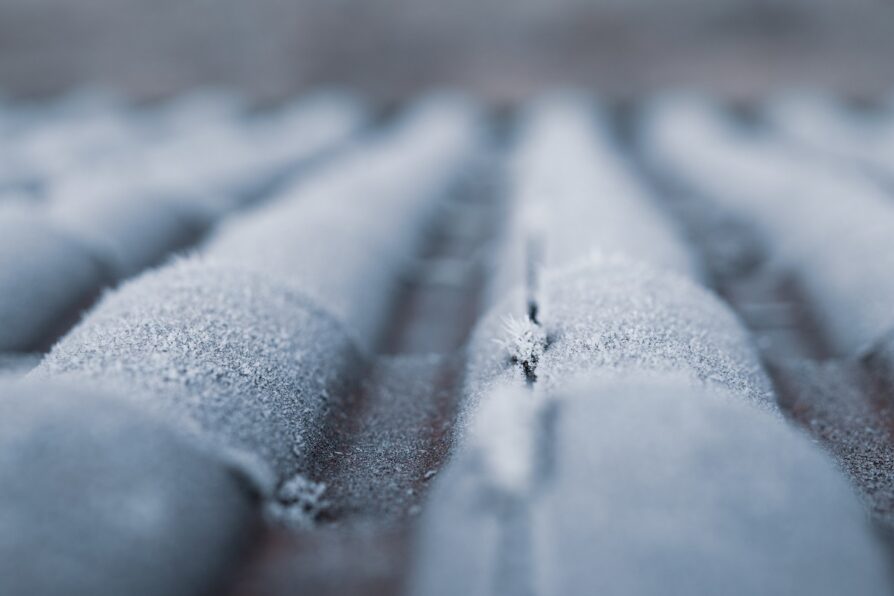Hail damage can significantly impact your roof’s integrity, making regular inspections essential, especially after severe weather. Identifying and addressing issues early can prevent further deterioration and costly repairs. The extent of hail damage a roof can withstand before requiring replacement depends on several factors, including the roof’s age, material, and overall condition. A newer roof with minimal damage may only need minor repairs or shingle replacement, while an older roof with widespread damage might require a full replacement. Additionally, whether the roof is flat or sloped influences how well it can be repaired and the level of damage that necessitates a complete replacement.
How to Choose Between Repair or Replacement
To properly determine whether you need residential roofing services requires a thorough roof inspection by a qualified contractor. Factors that a roofer will consider include the amount of damage, the type and age of the roof, the climate and weather patterns in your area, and the cost of repairs versus replacement. If your roof has sustained significant damage, such as multiple missing or damaged shingles, large areas of water damage, or structural damage, it is likely that replacement will be necessary.
Hail Damage
Hail is a powerful force, and can leave obvious damage to different types of roofing materials. In general, a tile roof withstands hailstorms better than metal or asphalt, but the scope and type of damage depends on the severity of the storm, the roof type, and even the age of the roof itself. Hail can cause various types of damage to a roof, including:
- Shingle Damage – Hail can cause shingles to crack or break, which can lead to water leaks and other problems.
- Granule Loss – The impact of hailstones can dislodge the protective granules on the surface of shingles, which can reduce their effectiveness and lifespan.
- Dents – Hail can cause dents or dimples in metal roofs, which can weaken the structural integrity of the roof and make it more vulnerable to corrosion.
- Cracks or Holes – Large hailstones can cause cracks or holes in flat or low-sloped roofs made of materials like asphalt or modified bitumen.
- Gutters and Downspouts – Hail can also damage gutters and downspouts, causing them to become clogged or detached from the roof.
To prevent incidental damages related to a hailstorm you should have your roof inspected as soon as possible after it passes. This is important because even minor damages can quickly escalate to major problems if they aren’t corrected in a timely manner. During the inspection, your roofing contractor will let you know about any problems they locate, and how to best approach making the roof whole again.
Wind Damage
Strong winds can cause a variety of damages to roofs, including these:
- Missing or Damaged Shingles or Tiles – High-speed winds can loosen or tear off roof shingles, causing damage to the roof’s protective layer and exposing it to further damage.
- Lifting or Peeling Shingles – When the wind blows at a high speed, it can cause the shingles to lift or peel, leaving gaps in the roof’s protection.
- Damaged Flashing – Strong winds can cause flashing to detach from the roof’s surface, leaving gaps that water can seep through.
- Fallen Trees or Branches – Heavy winds can cause trees or branches to fall on the roof, causing significant damage to the roof structure and shingles.
- Leaks – Wind damage to the roof can create holes and gaps, allowing water to enter and cause leaks.
- Roof Cracks – Strong winds can cause the roof to shift, leading to cracks and damage to the roof structure.
Other Roof Damage
In addition to wind and hail, your roof can also be compromised by Ultraviolet light and may be vulnerable to fire as well. Here are some things to check for during a roof inspection, and some pointers on choosing the right roofing material to protect against fire.
- UV Damage – Ultraviolet (UV) light can cause damage to a roof in a number of ways. When a roof is exposed to UV radiation, it can cause the roofing material to break down and deteriorate over time. UV radiation can also cause the colors of a roof to fade, making it less visually appealing.
The primary way that UV radiation damages a roof is by breaking down the chemical bonds in the roofing material. This can cause the material to become brittle, crack, and ultimately fail. This is particularly true for asphalt shingles, which are commonly used on residential roofs. In addition to breaking down the roofing material itself, UV radiation can also damage the adhesive that holds the shingles in place. Over time, this can cause the shingles to become loose and less effective at protecting the roof from the elements.
- Fire Protection – Fire is a complex issue and could potentially damage any type of roofing material, including tiles and metal. Fire protection may diminish as the roof ages, just as extended exposure to UV light causes fading and cracking. In general, the most fire-resistant roofing materials are typically those that are made from non-combustible materials or have been treated with fire-resistant coatings. When you replace your roof, it might be a good idea to consider materials that are more resistant to fire, such as these:
- Metal roofs – Metal roofs are highly fire-resistant and can withstand extreme heat and flames.
- Clay and concrete tiles – These materials are also highly fire-resistant and can help protect your home in the event of a wildfire.
- Slate roofs – Slate roofs are non-combustible and can provide excellent protection against fires.
- Fiber-cement roofs – Fiber-cement roofs are made from a combination of cement, sand, and cellulose fibers, making them highly fire-resistant.
- Asphalt Shingles w/ Fire-Resistant Coatings – While traditional asphalt shingles are not fire-resistant, some manufacturers offer shingles with fire-resistant coatings that can help protect against fires.
There is no definitive amount of damage before roof replacement is the only solution. Based on the type of roof, the cause and extent of damage, and the age of the existing roof, your roofing contractor can help you make the best decision.
Peak Roofing & Exteriors
If you’re looking for an honest and experienced team that can handle your residential repairs in Northwest Arkansas, Northern Louisiana, or West Texas, look no further. Peak Roofing & Exteriors can take care of your home or business with quality and integrity. Contact us today and book a FREE inspection!

